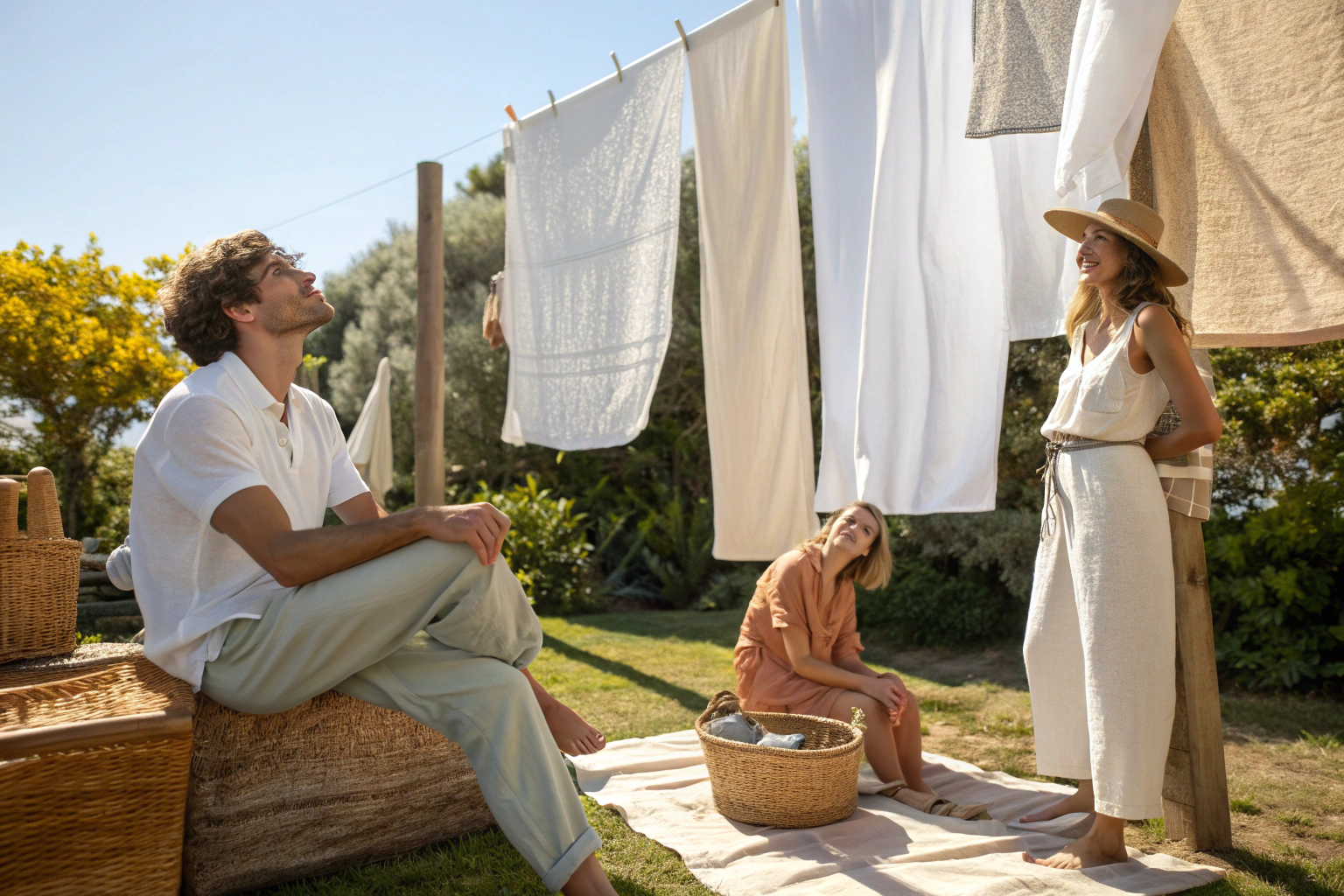When temperatures climb, the choice of fabric becomes essential to staying comfortable. Many assume that any thin fabric will suffice, yet breathability depends on fiber type, weaving method, and moisture management. Anyone who has worn polyester in humidity knows how stifling it can feel.
The most breathable fabrics for hot weather include natural fibers such as cotton, linen, and bamboo, as well as modern eco-textiles like Tencel™ and engineered blends. These materials allow airflow, absorb sweat, and dry faster, keeping the body cool.
Selecting the right fabric not only impacts comfort but also supports skin health, odor control, and long-term wearability. Below, I will outline the fabrics best suited for summer conditions.
Why is cotton a cooling fabric?
Cotton is a trusted material for hot climates. It is light, soft, and naturally breathable due to its fiber structure. Cotton absorbs perspiration and allows ventilation, making it suitable for everyday summer use. Still, pure cotton retains moisture, which may feel heavy in humid weather.
Cotton’s hollow fiber structure promotes airflow and absorbs perspiration, providing consistent comfort during warm days.
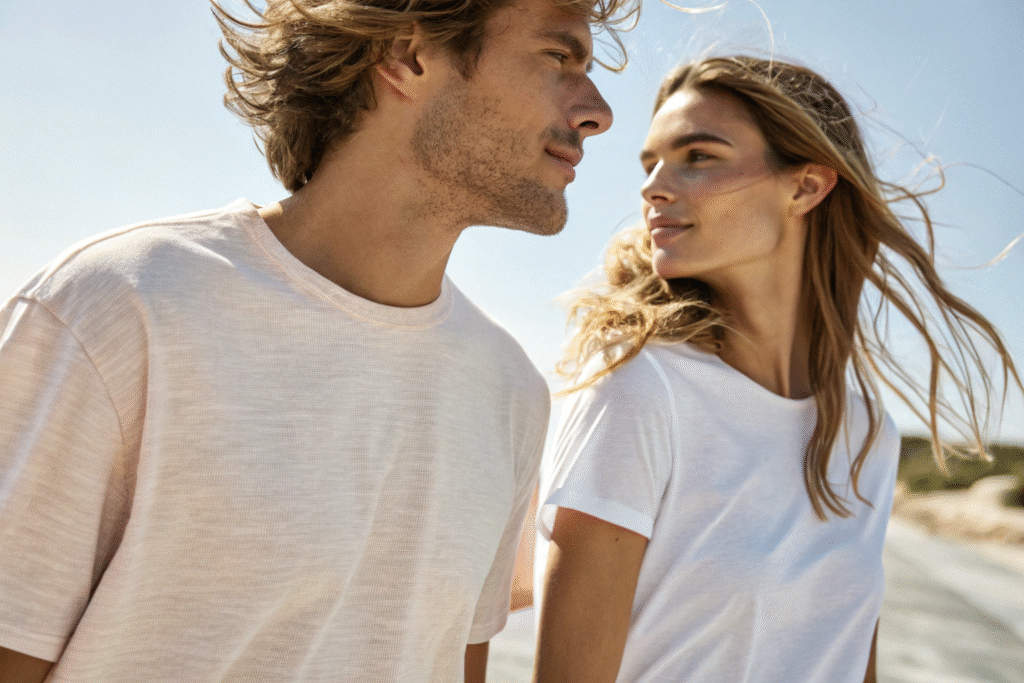
Does cotton absorb sweat effectively?
Cotton readily absorbs sweat, yet it dries more slowly than synthetics. This can make it cling in humid weather. Even so, cotton remains a reliable natural fiber for warm conditions. Advanced cotton blends improve drying speed while keeping softness.
When should you wear cotton in hot weather?
Cotton works best for daily shirts, dresses, and blouses. It is breathable, skin-friendly, and widely accessible. For active use, quicker-drying fabrics may be better, yet for lifestyle apparel, cotton remains unmatched.
Why is linen the best fabric for summer?
Linen, produced from flax, is globally recognized for its airy feel. It is highly breathable and naturally cooling, drying faster than cotton. This makes it particularly suitable for hot and humid environments.
Linen excels in hot weather because its stiff, thick fibers create space in the weave, which increases airflow and prevents clinging.
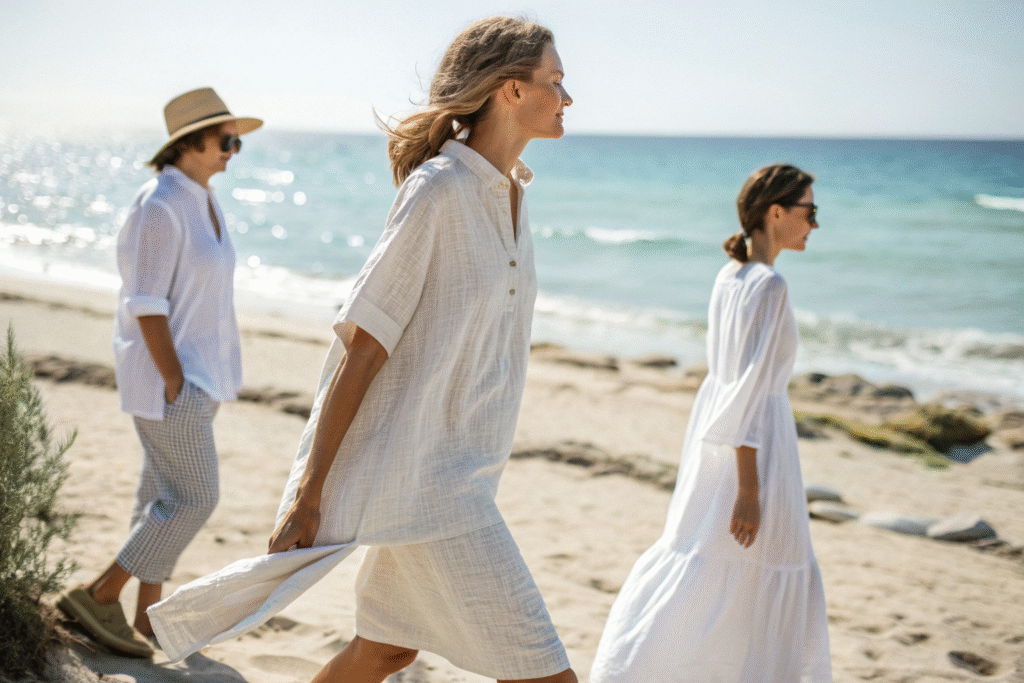
Why does linen feel cooler than cotton?
Linen fibers are less flexible, producing looser weaves with better airflow. Unlike cotton, it rarely sticks to the body, even in high humidity. The European Confederation of Flax and Hemp identifies linen as both sustainable and breathable.
When should you choose linen?
Linen is ideal for shirts, trousers, and dresses during summer travel or leisure. Its wrinkle-prone nature is often accepted as a mark of authenticity and relaxed style. For maximum airflow, linen remains the most effective fabric.
Are bamboo and Tencel™ good for hot weather?
Bamboo viscose and Tencel™ (lyocell) are modern eco-fabrics designed for comfort in heat. They are soft, breathable, and antibacterial, making them excellent for summer apparel.
Both bamboo and Tencel™ wick moisture rapidly and remain smooth against the skin, providing sustainable comfort in hot conditions.
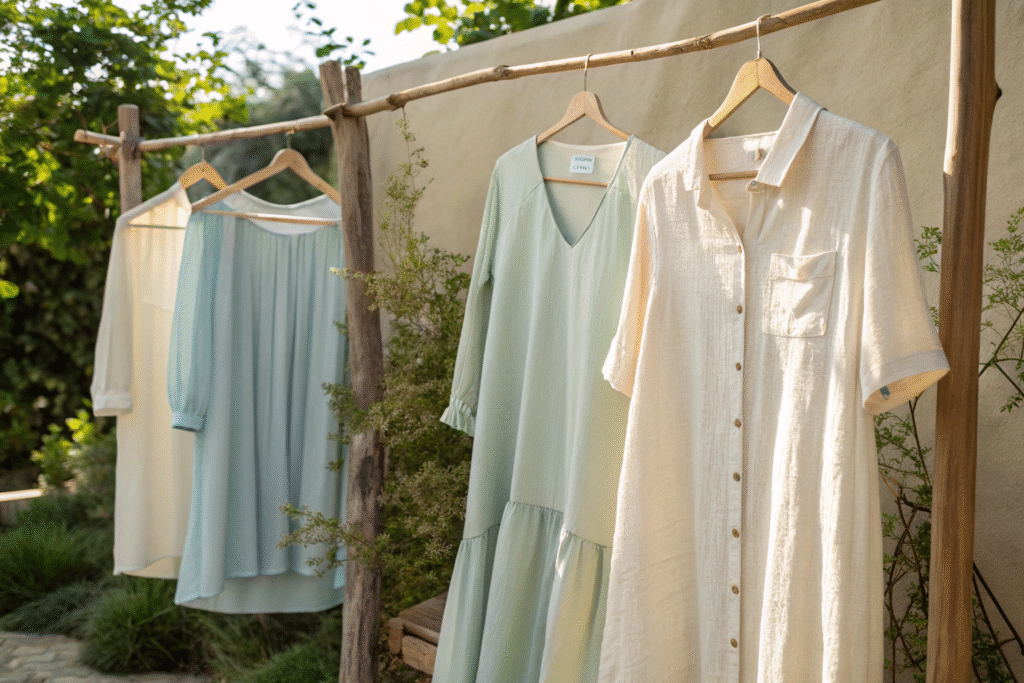
What makes bamboo and Tencel™ stand out?
These fabrics are highly absorbent, hypoallergenic, and fast-drying. They are also environmentally friendly. Tencel™ by Lenzing is renowned for sustainable production, while bamboo fabric is valued for activewear.
When should you wear bamboo or Tencel™?
They are best suited for underwear, loungewear, and activewear. These fabrics deliver breathability while reducing environmental impact, offering a balance between performance and sustainability.
Do performance fabrics work in hot weather?
Although synthetics like polyester and nylon are not naturally breathable, textile engineering has improved them for hot weather. Mesh weaves, micro-perforations, and moisture-wicking finishes make them effective for sports and outdoor use.
Performance fabrics are engineered to regulate sweat and airflow, making them suitable for active lifestyles in heat.
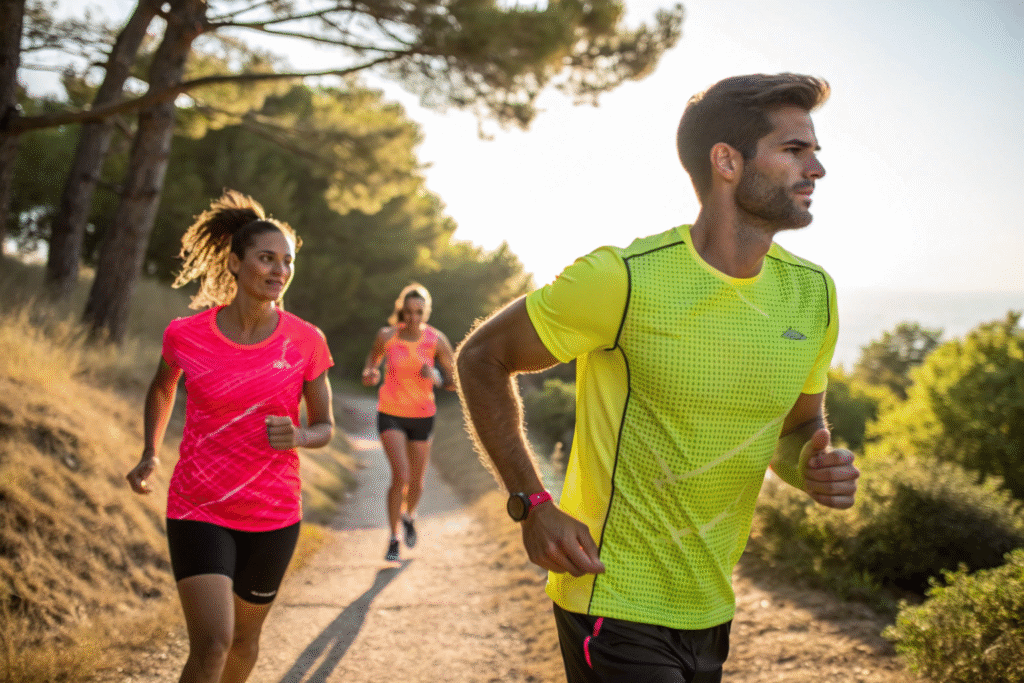
How do performance fabrics stay cool?
Moisture-wicking polyester spreads sweat across fabric surfaces for rapid evaporation. Coolmax® technology demonstrates how engineered fabrics enhance cooling. Leading outdoor apparel brands rely on these innovations.
When should you wear performance synthetics?
Performance fabrics are ideal for exercise, hiking, or high-activity settings. They are durable, lightweight, and quick-drying. Although less soft than naturals, they excel in moisture control.
Conclusion
The most breathable fabrics for summer include linen for maximum airflow, cotton for daily use, bamboo and Tencel™ for eco-friendly softness, and engineered synthetics for active wear. Each option addresses different needs depending on lifestyle and activity.
At Shanghai Fumao, we produce and supply a wide range of breathable fabrics with international certifications and sustainable processes. If you seek to launch or expand your clothing collection, we invite you to collaborate with us. Please contact our Business Director Elaine at elaine@fumaoclothing.com to discuss your next order. Together, we can create apparel that balances comfort, style, and durability for global markets.

